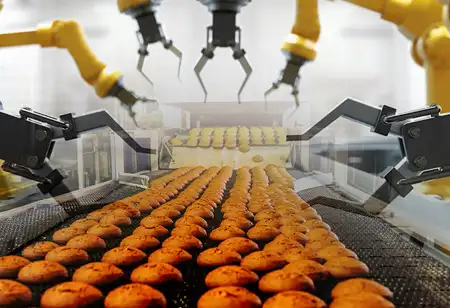THANK YOU FOR SUBSCRIBING
Be first to read the latest tech news, Industry Leader's Insights, and CIO interviews of medium and large enterprises exclusively from Food and Beverage Tech Review
Potential of Nanotechnology in Food Packaging: All You Need to Know
A nanoparticle coating can be applied to enhance the mechanical and physical properties of food packaging.

By
Food and Beverages Tech Review | Thursday, July 27, 2023
Stay ahead of the industry with exclusive feature stories on the top companies, expert insights and the latest news delivered straight to your inbox. Subscribe today.
Nanoparticles have been found to improve durability, strength, flexibility, biodegradability, thermal conductivity, UV absorption, water vapor, and oxygen resistance. This makes them ideal for food packaging, as they can extend the shelf life of the product while also providing a safe and reliable packaging solution.
Fremont, CA: A nanoparticle coating can be applied to enhance the mechanical and physical properties of food packaging. Nanoparticles have been found to improve durability, strength, flexibility, biodegradability, thermal conductivity, UV absorption, water vapor, and oxygen resistance. Additionally, they are environmentally friendly and can be recycled or composted.
Reducing food waste with nanotechnology
Nanomaterials can help extend the shelf life of food products by creating a barrier that prevents moisture, oxygen, and other contaminants from entering the package. To keep the food tasty and fresh for a more extended period, nanoscale coatings can be applied to food packaging creating a protective layer. Nanotechnology in food packaging may help reduce food waste by providing real-time information about the quality and freshness of the food. For example, intelligent packaging solutions use sensors and other technologies to monitor the package's temperature, humidity, and gas levels. This information is transferred to a smartphone app or other device, letting interested parties know when to consume or discard the food. Those parties could include consumers, food preparers, cooks, manufacturers, and processors. This system effectively takes the guesswork out of expiration periods and, more importantly, provides an accurate food quality and freshness timeline. Oxygen, light, cold, moisture, and heat can damage perishable and nonperishable foods. Therefore, it’s essential to correctly protect and monitor food items at all stages of their journey, from conception to packaging and even past the sale to the consumer.
Enhancing Food Safety with Nanotechnology
Another essential benefit of nanotechnology in food packaging is improved food safety. Silver nanoparticles have been shown to have antimicrobial properties that can kill bacteria and other pathogens. Incorporating silver nanoparticles into food packaging materials allows manufacturers to create a surface inhospitable to bacteria, reducing the risk of contamination and improving food safety for all, especially in developing countries. Other Nanomaterials, such as carbon nanotubes and graphene, can create sensors that detect harmful chemicals or other contaminants in food products. These sensors provide real-time information about the safety and quality of the food, allowing people to make informed decisions about what they eat.
I agree We use cookies on this website to enhance your user experience. By clicking any link on this page you are giving your consent for us to set cookies. More info







